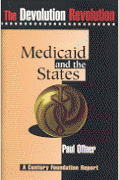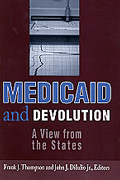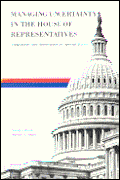Studies in this week’s Hutchins Roundup find that long-term interest rates respond to central bank announcements about economic uncertainty, tax incentives would do very little to create more innovators, and more.
Want to receive the Hutchins Roundup as an email? Sign up here to get it in your inbox every Thursday.
Central bank talk about uncertainty moves long-term interest rates
Central bank communication about the near-term outlook often leads to surprisingly large movements in long-term interest rates. Stephen Hansen and Michael McMahon from the University of Oxford and Matthew Tong from the Bank of England show that the degree of uncertainty in the central bank’s economic outlook can help explain this: As investors perceive the near-term economic outlook to be more (or less) uncertain they demand more (or less) compensation to hold longer-dated bonds and bond yields rise (or fall). Using the Bank of England’s quarterly Inflation Report, they show that movements in long-term interest rates are very responsive to numeric and narrative indicators about the amount of uncertainty in the Bank’s forecast, and less so to signals about future levels of growth or inflation. In contrast, short-term interest rates respond predominantly to news about the expected growth and inflation in the near term and less so to news about uncertainty. This implies that central bankers can influence interest rates by providing information not only on the expected path of the economy but on policymakers’ confidence in that path.
Financial incentives do little to spur innovators
Many countries provide tax breaks or grants to encourage innovation. Using individual tax filings of patent-holders in the United States, Alexander Bell of Harvard University and coauthors find that such measures are unlikely to have much effect. They show that inventors tend to make their highest-impact discoveries well after they have made career choices and their incomes have already experienced the highest growth. Furthermore, the distribution of income among patent-holders is highly skewed: The highest-paid 1 percent of patent-holders earn more than 22 percent of all patent-holders’ income, and most of this income accrues to the individuals with the most-cited inventions. All this indicates that the private returns to high-impact inventions are already very large, and that changes to top income tax rates would be unlikely to affect star inventors’ decisions to innovate. Instead, the authors show that increasing exposure to innovation during childhood could have large effects on aggregate innovation by drawing more star innovators into the field.
California’s Medicaid expansion boosted hospital profits, replaced locally-funded programs
The Affordable Care Act of 2014 included a provision that allowed states to expand Medicaid. Some states that opted to expand Medicaid, however, already had large state- and county-funded healthcare programs. What did expansions in these states mean for local hospitals and taxpayers? Mark Duggan and Emilie Jackson of Stanford University and Atul Gupta of the University of Pennsylvania find that about half of the funds that went to California’s Medicaid expansion simply replaced benefits from pre-existing state and county health care programs, implying that the expansion represented a large transfer from federal taxpayers to California taxpayers. In addition, they show that Medicaid reimbursed local hospitals about twice as much as did the county-level safety net programs that existed before 2014, and that the increase in revenue mostly boosted hospital profits rather than spending on hospital services or capacity. The findings bring into question the extent to which additional Medicaid funds lead to improved patient health at the local level, they say.
Chart of the week: Treatment for state-owned enterprises in China has only gotten better
“There is an increase in general uncertainty. This increase in general uncertainty has been produced by the threats of protectionism, doubts – actually extensive doubts – about the multilateral rules that have underpinned our growth since the Second World War. The protracted negotiations and their unclear outcome yet about Brexit and of course the implications that this might have, I have said many times that if you compare the potential disruption coming from Brexit for the aggregate of the euro area, well, just looking at aggregate numbers it doesn’t seem to be an extensive disruption. But we have to take into account things like value chains and we have also to take into account that some countries are more exposed, of course, to events in the Brexit case,” says Mario Draghi, president of the European Central Bank.
“[…] All this, it’s a pretty long list of factors so the issue is now, and that’s again there was unanimity, in saying that the key aspect to assess is the persistence of the general uncertainty as being produced by these factors. Certainly if all this were to persist, we should expect a longer weak momentum beyond the near term. […] One thing that basically of course we all agree is that if there is going to be clarity on the exports and the trade sector, much of what we are seeing today in terms of weakness will very likely wash out. For others however, the downside movement in all industries, in all indicators, both hard and soft, has lasted now several quarters. All these risk factors are not going to disappear and they are affecting confidence.”










Commentary
Hutchins Roundup: Central bank uncertainty, incentives for inventors, and more
January 31, 2019